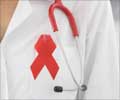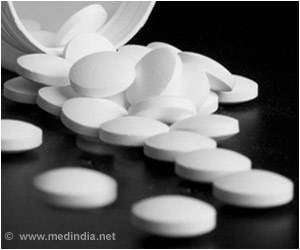The advent of computerized smart systems means that they can deliver drugs intravenously in exact volumes to hospital patients.

Now, a new optical device developed by a team of electrical and computer engineering students at the University of Illinois at Urbana-Champaign (UIUC) can identify the contents of the fluid in an intravenous (IV) line in real-time, offering a promising way to improve the safety of IV drug delivery. The team, led by Prof. Brian T. Cunningham, interim director of the Micro and Nanotechnology Laboratory at UIUC, will present its work at The Optical Society's (OSA) Annual Meeting, Frontiers in Optics (FiO) 2013, being held Oct. 6-10 in Orlando, Fla.
The vulnerability of IV drug-delivery systems due to human error is a chief concern in hospital safety, Cunningham said. Errors can include incorrect dosage, unintentional substitution of one drug for another, and co-delivery of incompatible drugs.
"Up to 61 percent of all life-threatening errors during hospitalization are associated with IV drug therapy," Cunningham said, citing a recent report. "So for all the really good things hospitals can do, the data shows that mistakes can occasionally happen."
To approach this problem, Cunningham and colleagues turned to the very small – to structures and processes at the nanoscale (one-billionth of a meter), where novel physical and chemical properties arise. The researchers use a technology called Surface-Enhanced Raman Scattering (SERS), a powerful analytical tool prized for its extreme sensitivity in obtaining molecular signals that can be used to identify chemicals. To determine the identity of a particular IV medication, researchers shine laser light onto a nanostructured gold surface that contains millions of tiny "nano-domes" that are separated from each other by as little as 10 nanometers. The nano-domes are incorporated into the inner surface of IV tubing, where they are exposed to drugs that are dispersed in liquid. They capture the light scattered from drug molecules that are in contact with the nano-domes and use SERS to determine the drug's molecular signature. Finally, they match the signature to known signatures for the drug in order to confirm the presence of a specific medication in the IV line.
While other groups have demonstrated excellent nanostructured surfaces for SERS, those developed by the Cunningham group are unique because they are inexpensively produced on flexible plastic surfaces by a replica molding process with nanometer scale accuracy.
Advertisement
The next step is further evaluation for combinations of up to ten drugs being delivered at the same time. Computer algorithms are also being developed to automatically interpret the SERS spectra, and Cunningham's team reports that the system is now being evaluated for possible commercialization.
Advertisement
Source-Eurekalert











